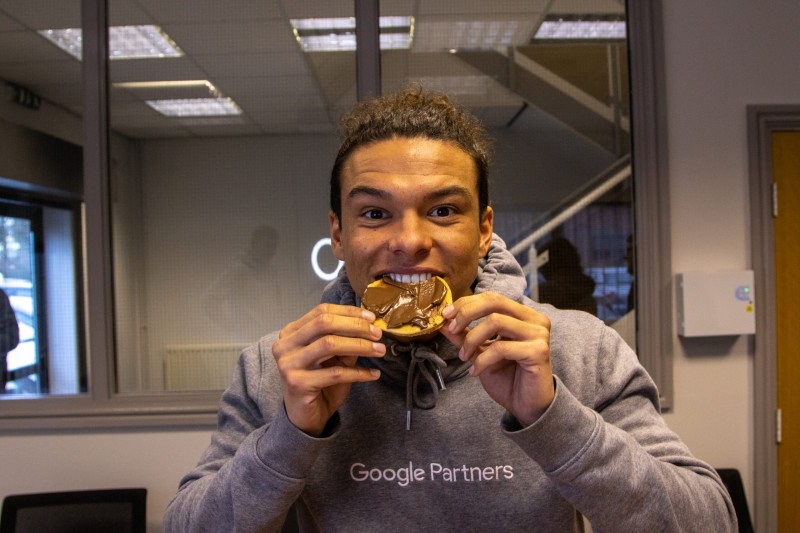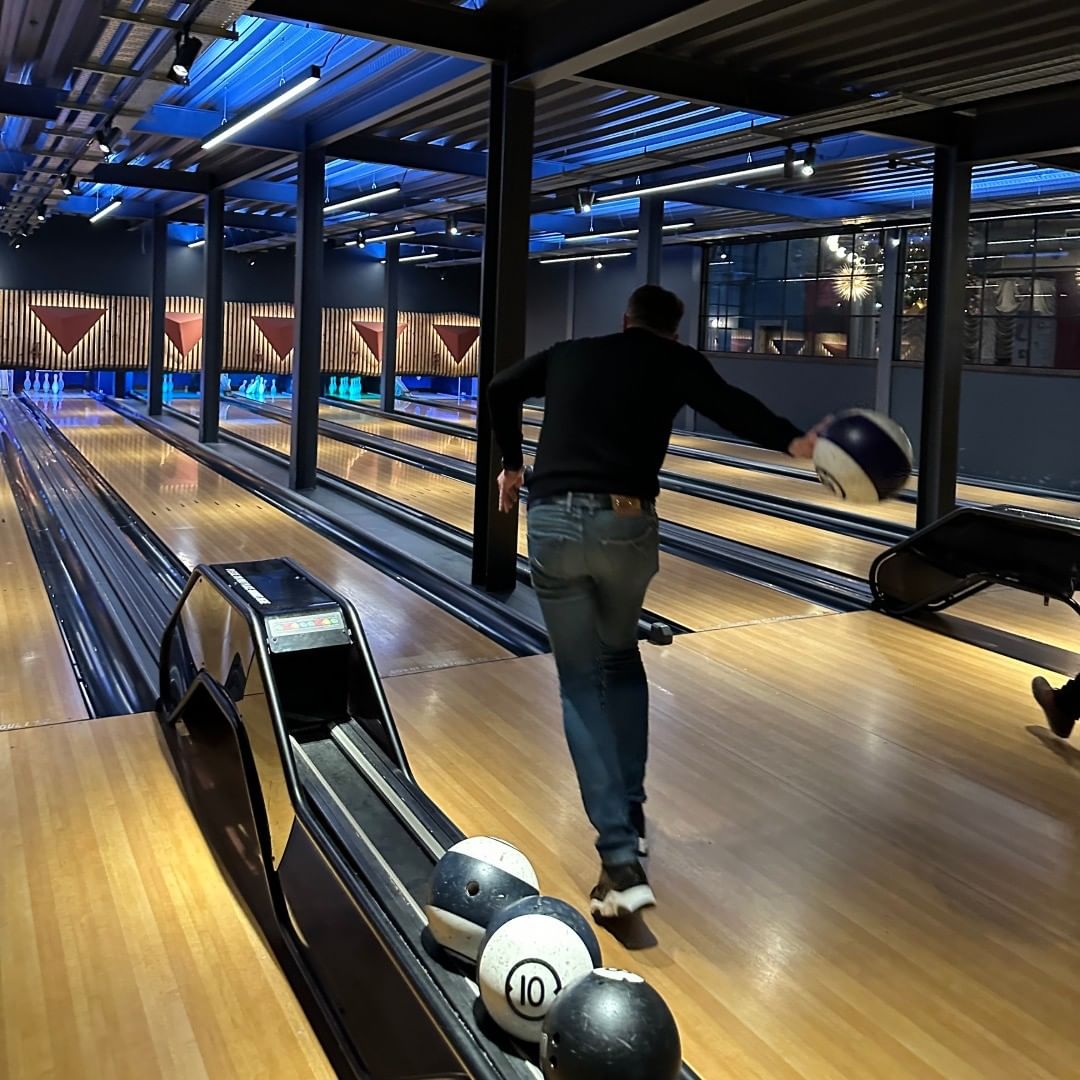If you’re trying to reach new leads or retarget non-converters who’ve been on your website, display advertising and PPC marketing are an effective way of getting in front of them when they’re searching for other things online.
The problem with display ads – and content marketing in general – is that because there’s so much of it, it can be hard to stand out from the crowd and not have your ads seen as annoying spam.
So, to help you out we’ve looked at the top industry trends and strategies being used to get success right now so you can get better results from your PPC and display advertising.
Get your ads ready for mobile
Nearly half the world’s population has a smartphone today.
That’s about 3.8 billion people carrying around a computer in their pocket.
Mobile phones are now responsible for the majority (55%) of global web traffic.
If your ads aren’t set up for mobile, you’re not getting in front of more than half your customers.
Plus, it’s easier to create ads that are ‘optimised’ for mobile and then scale them up to desktop than it is to design them the other way around, so designing display ads as mobile first is definitely the best way to do them.
Highly visual ads with short and direct copy look the best on smaller mobile screens.
And, with 5G and better mobile connectivity coming down the line, it’s going to be even easier to target mobile ads in the future so you’ll have more real time, context-based, location-based, and interactive ads.
Video, VR, and AR
Video content has overtaken blogs and infographics as the most popular media in digital marketing, according to a report by HubSpot.
In-banner video is a common way to capitalise on this trend, with a video clip or animation playing in the ad space that would otherwise be a static image.
Another option is in-stream video within YouTube videos.
Stats gathered by Lemonlight reveal that not only are video ads more memorable, they’re the number one way people find new brands to buy from.
There are plenty of creative opportunities with video marketing.
From live video streams, to posting video on social media sites like TikTok.
The most unique video display ads take advantage of Augmented Reality (AR) and Virtual Reality (VR) technologies, offering a more immersive experience that elevates your brand.
This includes interactive innovations like 360-degree videos, or applications that let people virtually test your products on themselves and in their living spaces using their phone’s camera.
More consumers are beginning to look for things like 360-videos and VR to tell them a unique story, which increases their purchase rate.
Automation and AI
From Smart Bidding in Google Ads to predictive modelling, automation technology makes marketing so much easier by doing a lot of the work for you, saving time and money.
Artificial Intelligence (AI) is a driving force in automating ads, as smart software is able to do things like:
- Analyse search patterns
- Generate context-based content
- Recommend related products
- Offer real-time communication with chatbots
Programmatic ad buying involves AI automating the process of purchasing ad space to target specific audiences.
The algorithms match data between audiences and your ad catalogue to use optimised ads across various channels, maximising cost efficiency.
Automating tools are one of the top resources that can help to boost your marketing ROI.
Social media and influencers
Pushing display ads on social media platforms is easy with sites like Facebook, X, and Instagram, which all have their own advertising systems and millions of users.
However, different social media platforms are popular with different demographics, so you should use social media to beta test potential ads for audience responsiveness before doing wider rollouts.
Social media platforms are constantly developing new features in attempts to attract a greater audience share, so you should take advantage of formats like stories and shoppable posts for advertising.
Stories boost audience engagement and brand awareness, especially if you include polls and links to encourage viewers to explore further, while shoppable posts let users make a purchase without having to leave the social platform.
Using influencers in marketing to get the attention of their audiences continues to be a common strategy, reaching new places to display ads.
Platforms like TikTok, LinkedIn, Twitch, Pinterest, and Snapchat are now the most popular for influencer marketing in 2021.
However, 96% of people distrust sponsored posts from influencers, while consumers are more likely to trust the opinions of other customers.
It might be time to pivot to user-generated content instead, from incorporating written testimonials to user-produced videos and images through hashtag challenges.
Voice search and visual search
Some marketing niches don’t include visual displays at all.
With the increasing use of voice-activated smart speakers, you could be optimising your ads for voice search and taking advantage of audio ads.
According to estimates by Statista, 4 billion people use voice search assistants, with that number expected to double by 2024.
Voice search is also the second most popular type of search on mobile devices behind browsers, with mobile voice searches being more likely to be local-based than text searches.
Search engines pull the answers to voice searches from the top five search results, with over 40% of answers coming from featured snippets.
To get your business and your products or services into those top results, you need to be posting questions with concise answers containing long-tail keywords.
Implementing speakable schema markup for key text helps to optimise your content for audio answers.
Data privacy and security
Data protection and privacy awareness is ever-growing with changing laws and data breach scandals.
A data-driven approach is necessary for targeting display ads, but marketing teams have to factor in GDPR laws and customer confidence when gathering their data.
Using third-party data for mass marketing is no longer acceptable, or successful.
The higher quality of first-party data gathered through opt-in methods is better for contextual targeting, as long as you know how to use it to develop a relevant message and deploy it on the appropriate channels at the right times.
To do this securely, more companies are investing in Customer Data Platforms to unify data and keep it safe, with CDP deployment jumping up 12% in the last year.
Blockchain is another technology gradually growing in popularity among display marketers to reduce fraud and improve transparency.
It helps to make sure ads are displayed on authentic sites and tracks real people’s impressions and click-throughs, storing authenticated transactions in a secure digital ledger so marketing campaign audits and key performance indicators are more accurate.
The blockchain market is expected to grow by over 67% between 2020 and 2025 as more enterprise blockchain solutions are developed.
Omnichannel marketing
Advertising across multiple platforms is a must to connect with more prospects, especially in 2021 as more platforms develop.
Brands need to offer a consistent message across multiple channels to enhance user experience and call consumers to action.
This means investing in better analytics tools to manage your inventory of display ads so they’re shown in the right places in the right format and size.
Stats show that omnichannel marketing has 13.56% higher engagement, 250% higher purchase frequency, and 90% higher customer retention than single-channel marketing.
Engaging with consumers via more channels, especially social media, will help to build brand awareness and trust and keep your products in their minds until it translates to revenue.
Straightforward branding
Branding is an important part of advertising because it helps to build awareness and trust towards your brand.
Surveys have shown that 86% of consumers only support a brand if it’s authentic, and 81% will only buy from brands they trust.
So how do display ads help you get consumers to trust your brand?
Successful display ads should define your brand name and message while advertising a product in a simple, uncluttered way.
They’re like billboards at the side of the road – they need to catch the eye and convey a message within a few seconds if the person is expected to take further action after seeing it.
It takes 3-7 impressions for people to remember a brand, but using a signature colour can improve brand recognition by up to 80%.
For omnichannel display ads to raise brand awareness, they need to be consistent in style.
Things like your colours, contextual themes, and calls to action should align no matter which site the ad is displayed on.
Your display ads should use compelling titles and images to stand out and get people to click on them to find out how you can answer a question or resolve a problem they have.
The more consistent your branding is, you could achieve 3.5 times more brand visibility and 23% times more revenue than inconsistent branding.
Dynamic creative optimisation
The dynamic creative advertising market is still growing, but it’s a specific form of automated advert adaptation that personalises display ads to viewers for you.
Banner ads have been around for over 25 years, so it’s not surprising that generic and static display ads aren’t cutting it anymore.
DCO technology makes sure that individual consumers see relevant messages by tailoring the ad content to the data gathered about them in real time.
This could be geolocation, time, weather, age, gender, device… or elements of the ad itself that the user previously responded to better, like size, colour, font, and ad location.
DCO is a fast and efficient way of personalising retargeting ads for segmented audiences, testing technical and visual aspects and collecting data on key performance indicators at the same time.
According to Cybage, DCO ads have a 50% higher rate of post-click conversions than regular display ads.
The car hire company Hertz also found that a DCO campaign increased onsite transactions by 111%, boosted their revenue by 215%, and reduced the cost per acquisition by 85%.
DCO enriches user experience, saves you time and resources, and works well with other methods like native advertising.
Native advertising
Native ads blend display ads into the platform they’re hosted on so they’re less disruptive.
They should match the context and design, from tone to colours, aligning with the editorial content rather than being a blatant and irrelevant advertisement.
This style of advertising is becoming more popular because it fits well into social media feeds and digital publications.
According to Outbrain, people view native ads 53% more than traditional display ads, and they create 18% higher purchase intent.
This display advertising route also improves engagement by helping to fight ad fatigue.
Even when consumers notice they’re sneakily being advertised to this way, it doesn’t have a negative effect on their engagement.
Increased personalisation
In the same vein as dynamic creative optimisation, personalised ads are the key to getting consumers to trust your brand and click on your product ads.
If you’re not doing it already, you should be using audience segmentation to identify different buyer personas that you can target in different ways that resonate best with each particular group.
The data you gather about consumers in that group should inform the display ads you push for them so they get a personalised experience.
Though 77% of consumers would choose or pay more for a brand that provides a personalised experience, only 22% are satisfied with the levels of personalisation they’re receiving.
In fact, non-personalised content gets an 83% lower response rate, and 63% of people will stop buying from brands altogether if their personalisation is poor.
There’s clearly a growing demand for personalisation among consumers, as 69% have come to expect businesses to make personalised recommendations the way major companies like Amazon, Netflix, and Spotify do.
The increasing need for personalisation in advertising has also fuelled the rise of automation and AI technology, which does most of the work for you so there’s more time and money to invest in other areas of your business.
To wrap things up, display advertising still has a lot to offer to aid your business growth, so you should be embracing at least a few of the key trends above in 2021.
If you’re not sure how to implement them, drop us a message.
-
Experienced Content Editor with a demonstrated history of working in the retail and sports industry, with plenty of experience of working in social media on the side. Skilled in content management systems, as well as social media. Strong content management professional with over 7 years of experience editing and writing content.
Posted by: Jack Watson
October 7, 2023







